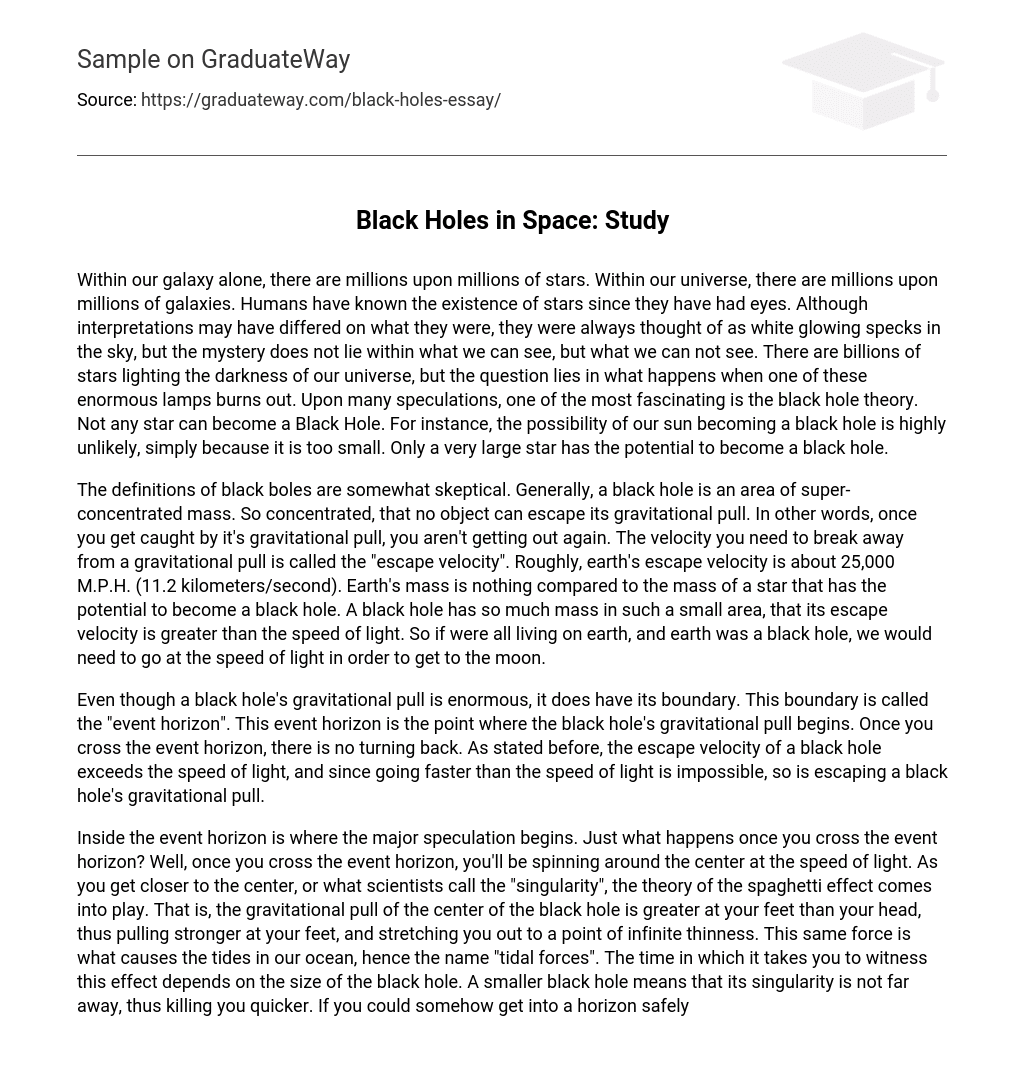There are countless stars within our galaxy alone and numerous galaxies in the entire universe. Since humans have existed, we have been aware of these stars, perceiving them as shining white dots in the sky with varying interpretations. However, the true mystery lies in what remains invisible to us. The universe is filled with billions of stars that illuminate the darkness, but questions arise when one of these massive luminaries stops shining. Among many theories, black holes are particularly captivating. Not every star has the potential to transform into a black hole; for instance, our sun is highly unlikely to become one due to its small size. Only a star of immense magnitude holds this possibility.
The definitions of black holes are somewhat uncertain. Essentially, a black hole is an extremely dense mass that exerts such strong gravitational attraction that no object can escape it once caught in its pull.
The speed needed to break free from a gravitational pull is called the “escape velocity”. The escape velocity of Earth is approximately 25,000 M.P.H. (11.2 kilometers/second). However, the mass of Earth is much smaller compared to a star with the potential to become a black hole.
A black hole has such immense mass confined within a small space that its escape velocity exceeds the speed of light. Hence, if we were all on Earth and it turned into a black hole, traveling at the speed of light would be necessary to reach the moon.
Despite its immense gravitational force, a black hole is limited by the presence of an “event horizon” that designates the initiation of its gravitational pull. Once this threshold is surpassed, there is no possibility of reversal due to the fact that the velocity necessary to break free from a black hole exceeds that of light, rendering escape impossible.
There is much speculation about what lies beyond the event horizon, with some suggesting that passing through this boundary requires rotating at the speed of light around the central point. As you approach the center, also known as the “singularity,” a phenomenon called the “spaghetti effect” is believed to occur. This effect occurs due to the stronger gravitational pull exerted by the black hole’s center on your feet compared to your head, causing your feet to be stretched infinitely thin. These forces are similar to tidal forces responsible for ocean tides. The duration of observing this effect depends on the size of the black hole; smaller ones with closer singularities result in a quicker demise. If it were somehow safe to enter the event horizon and observe one’s surroundings, distorted images would be perceived. Although external images can still be seen as light enters, your body would not reflect any light back, rendering you invisible.
Despite the highly improbable chance of living long enough to witness the singularity, its potential consequences remain uncertain. Essentially, entering this realm implies entering a world where time ceases to exist and Einstein’s established principles no longer apply.
Despite the inability to directly observe black holes due to their light-blocking nature, there is considerable evidence that supports their presence. Nevertheless, it is feasible to ascertain the mass quantity in a particular region. If this area contains a significant amount of mass, it strongly suggests the existence of a black hole.
Black holes, similar to stars, have a limited lifespan and go through a process of death. The speculation regarding how they come to an end is highly speculative. One widely agreed upon theory is black hole evaporation, which describes the way in which black holes die. These enigmatic entities emit radiation by extracting energy from their mass, leading to a gradual decrease in size. Ultimately, black holes exhaust themselves entirely. Stephen Hawking introduced this notion in the 1970s, making a substantial contribution to the field of physics.





